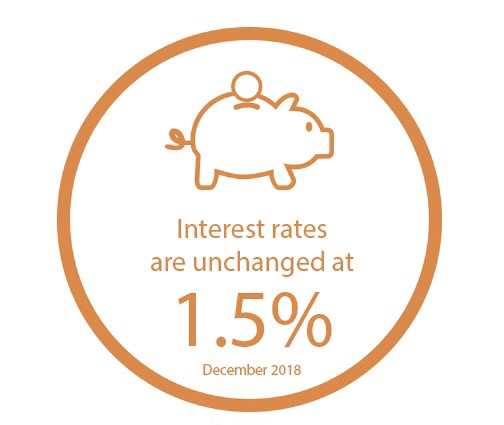What happened to interest rate in 2018 and forecast in 2019.
January 4, 2019 In Blog Leave a comment
January 4, 2019 In Blog Leave a comment
The Australian economy is performing well in 2018. However, some signs of a slowdown in global economic and especially Chinese economic is getting slowly.
The GDP growth to average around 3½ per cent over in 2018 and next, before slowing in 2020 due to slower growth in exports of resources. Business conditions are positive and non-mining business investment is expected to increase. Higher levels of public infrastructure investment are also supporting the economy.
Growth in household income remains low, debt levels are high and some asset prices have declined. The drought has led to difficult conditions in parts of the farm sector.
Australia’s terms of trade have increased over the past couple of years and have been stronger than earlier expected. This has helped boost national income.
Inflation remains low and stable. Over the past year, CPI inflation was 1.9 per cent and in underlying terms inflation was 1¾ per cent. Inflation is expected to pick up over the next couple of years, with the pick-up likely to be gradual. The central scenario is for inflation to be 2¼ per cent in 2019 and a bit higher in the following year.
Conditions in the Sydney and Melbourne housing markets have continued to ease and nationwide measures of rent inflation remain low. Credit conditions for some borrowers are tighter than they have been for some time, with some lenders having a reduced appetite to lend. The demand for credit by investors in the housing market has slowed noticeably as the dynamics of the housing market have change. Therefore, the low level of interest rates with 1.5% is continuing to support the Australian economy.
To sum up, Domestically, inflation rate has stayed in the targeted range and unemployment rate is still high but downwards, both supporting the current expansionary monetary policy. We believe the low cash rate will stay in 2019 and recommend that investment should be in line with previous year since the cash rate fell down. Attention needs to be paid to the future cash rate alteration beyond 2019.
